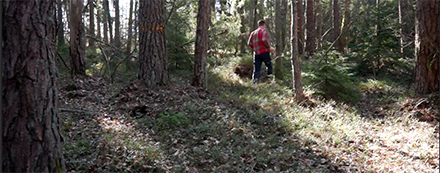By 2025, European forests are likely to hold 18% less carbon than in the early 2000s, according to disturbing new information published by the European Commission. Source: Timberbiz
The new figures have been released under the EU’s Land Use, Land Use Change and Forestry (LULUCF) regulation, which was agreed in 2018 and which accounts for carbon emissions from land and forests. Under it, Member States are required to develop baselines, called forest reference levels, showing how much carbon their forests will store over this decade.
Kelsey Perlman, Forest and Climate Campaigner at Fern, said: “These numbers are terrifying, particularly when set alongside recent studies showing the dire state that many of Europe’s forests are already in. To support increasing climate targets, we should prevent our forests from hemorrhaging carbon.”
While the current LULUCF regulation has revealed the scale of the problem, it is failing to reverse it. Beyond reviewing the legislation to increase carbon removals, we need strong new laws on biodiversity protection to curb the intensive forestry which is driving the current destruction.”
Member States’ low baselines are not the only the way that the LULUCF regulation has enabled Europe’s forests to lose carbon. It fudged the numbers on how much carbon dioxide (CO2) was considered stored in forests historically1. The LULUCF regulation carefully chose a historical baseline that allowed Europe to “hide” around 40 million tons of CO2 emissions caused by increased logging.
Now, the reference levels presented in the delegated act, which are future baselines, will allow Member States and the UK to further reduce the CO2 stored in their forest by another 40 million tons over the first half of this decade. Taken together, these amount to an 18.7% drop in the carbon sink from early 2000s levels. This jeopardizes the integrity of the EU’s 2030 climate target and is not in line with goals to maintain or enhance the carbon stored in forests.
This legislation is already proposed to be revised by the European Commission2 in the summer of 2021 to increase ambition in response to increased 2030 climate targets.






